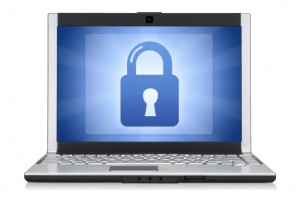 Hackers of the world have gone wild, infiltrating a variety of sites such as those of the CIA, PBS, and just the other day, NBC. Supposedly “secure” servers of companies as notable as JP Morgan Chase and Sony have been hacked to get credit card or customer information.
Hackers of the world have gone wild, infiltrating a variety of sites such as those of the CIA, PBS, and just the other day, NBC. Supposedly “secure” servers of companies as notable as JP Morgan Chase and Sony have been hacked to get credit card or customer information.
In fact, hacking has had such a substantial effect on the business world that Rupert Murdoch was recently forced to close an English tabloid as a result of the paper’s hacking of celebrity phones. Stories of massive and embarrassing hackings are popping up everywhere letting us know that these hackers mean business.
And if you’re a business, being ready means more than having an IT emergency response plan. In today’s hacker environment, a company’s response plan must be holistic in nature, agile in execution, and grounded in reality. The right response must include technical, legal, educational, and public affairs components. Each area has a significant role to play and one that if executed incorrectly can make the difference between disaster and recovery. And we’re talking just security. The problems compound when you throw in safety and privacy as well since the three are interconnected and not mutually exclusive.
Having been at the forefront of safety, security, and privacy (SSP) crises many times over in my previous roles in corporate America, and now as the founder of an online security consulting company, I can tell you that many company executives often think of the public relations (PR) aspect of responding to a hacker crisis as ‘fluff’ or coming from the ‘group that spins’.
In fact, PR is at the epicenter of this type of crisis and how it is handled can make the difference between minor aftershocks or more devastating quakes.
The right PR team will have to navigate with agility, acumen, and diplomacy while still grounded in relevant experience with safety, security, and privacy. The challenges presented are far ranging and come in multiple forms. Questions abound such as:
-who should be the spokesperson
-what is better, a reactive or proactive media strategy
-when should the affected consumers be informed
-where is the place to release information
-how should employees be informed about what is happening
-when should a safety, security, and privacy crisis plan be implemented
-who makes the final call on what goes out
Given the sudden onslaught of hackers, traditional PR firms are facing quite the challenge in helping clients respond. The problem – many of these firms aren’t yet equipped or experienced to handle the unique challenges SSP PR brings even if they have handled other types of crisis in the past.
If your company is at risk of falling victim to a SSP PR nightmare, begin internal discussions ASAP to see if you are equipped to handle such an event holistically.
The more you read about the pain and suffering other companies have gone through, the more daunting the problem may appear. But, it is one that can be overcome with the right kind of planning, team, and program in place. Having worked closely with several clients to put in place SSP PR strategic plans, we have seen the positives that come from doing it right the first time.
If there is one thing to keep in mind it is this – hackers don’t follow traditional fault lines. At any time, you can be the flashing red dot marking the epicenter of a major SSP earthquake.

 Lately, it seems like we hear a story every week about a new security breach concerning our personal information. Just a few weeks ago, Epsilon was hacked and millions of email addresses were stolen. A few weeks later, Sony announced that their worldwide gaming network too was hacked. And now, companies like Apple and Google are being scrutinized for their questionable iPhone and Android tracking processes.
Lately, it seems like we hear a story every week about a new security breach concerning our personal information. Just a few weeks ago, Epsilon was hacked and millions of email addresses were stolen. A few weeks later, Sony announced that their worldwide gaming network too was hacked. And now, companies like Apple and Google are being scrutinized for their questionable iPhone and Android tracking processes.



 The thieves who made off with more than $2.5M from Citibank and caused the bank to issue 100,000 replacement bank cards have highlighted an alarming trend. Hackers are evolving. And, they are organizing and uniting. They even have a Twitter account. Before the advent of the Internet, we called these hackers “robbers” or “criminals” or the “mafia.” However, now that the Internet has provided a way to enter the front door through the digital underground, hacking has evolved in to a disastrous enterprise.
The thieves who made off with more than $2.5M from Citibank and caused the bank to issue 100,000 replacement bank cards have highlighted an alarming trend. Hackers are evolving. And, they are organizing and uniting. They even have a Twitter account. Before the advent of the Internet, we called these hackers “robbers” or “criminals” or the “mafia.” However, now that the Internet has provided a way to enter the front door through the digital underground, hacking has evolved in to a disastrous enterprise.
Follow me